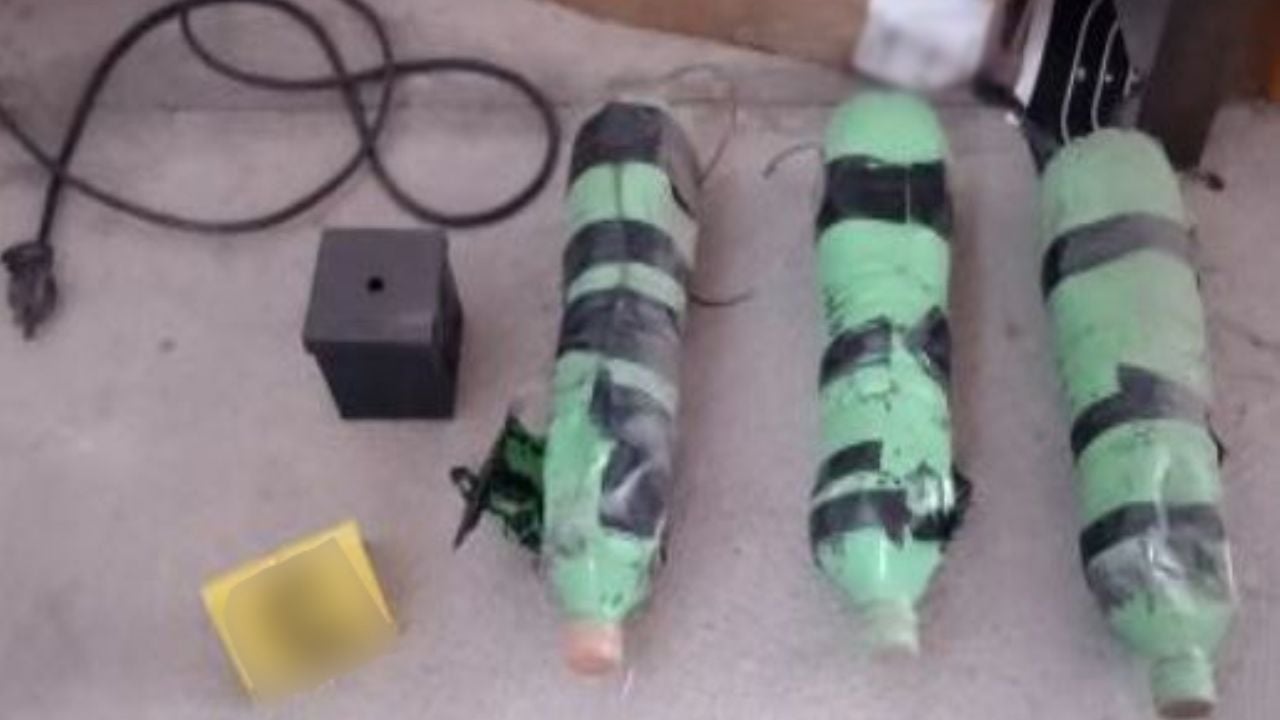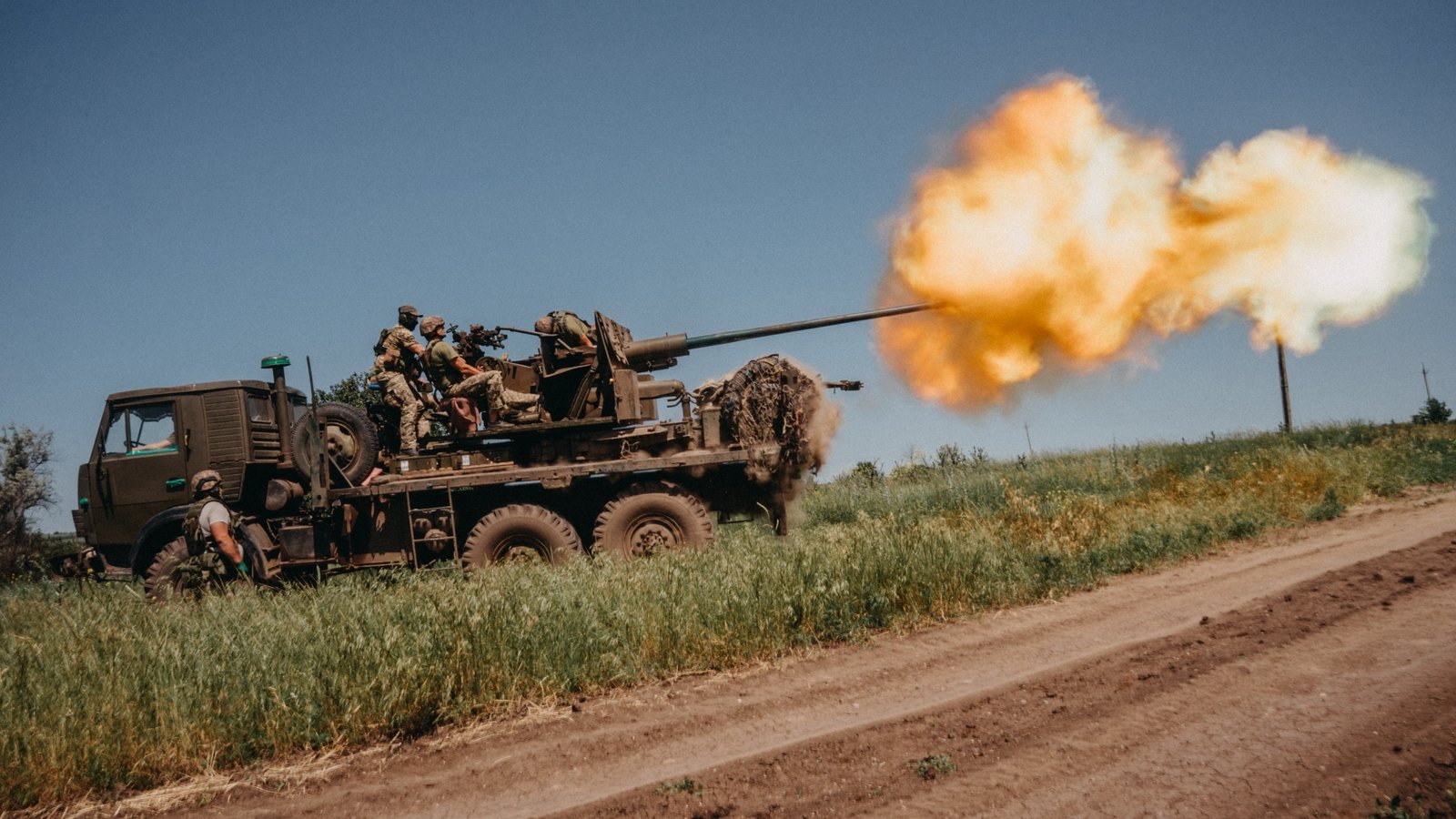Explosive Arsenal Seized in Mexico: Cartel Conflict Intensifies
Table of Contents
- 1. Explosive Arsenal Seized in Mexico: Cartel Conflict Intensifies
- 2. Massive Explosives Haul in Jalisco
- 3. IED factory Uncovered in Villa Hidalgo
- 4. Past Incidents and a Growing Trend
- 5. Sinaloa Cartel Feud Fuels Arms race
- 6. U.S. Implications and Concerns
- 7. Expert Analysis and Counterarguments
- 8. What are teh potential consequences of the increasing reliance on IEDs by Mexican cartels for achieving their objectives?
- 9. Interview: Explosives, Cartels, and the Escalating Violence in Mexico
- 10. Introduction
- 11. The Explosives Haul and the Sinaloa Cartel
- 12. IED Factories and Shifting tactics
- 13. Implications for the United States
- 14. Addressing the Problem and Future Outlook
- 15. Looking Ahead and Reader Interaction
Archyde.com – March 24, 2025 – Mexican authorities have uncovered a importent cache of explosives in two seperate operations, highlighting the escalating conflict within the Sinaloa Cartel adn raising concerns about the group’s increasing reliance on improvised explosive devices (ieds). the seizures, which occurred in Tepetitlán and Villa Hidalgo, Jalisco, reveal a troubling trend of cartel groups utilizing increasingly sophisticated weaponry.
Massive Explosives Haul in Jalisco
Over the weekend of March 22-23, 2025, a joint operation between the Marina Secretariat and the Jalisco Prosecutor’s Office resulted in the seizure of a significant amount of high-powered explosives in Tepetitlán, located near Zapopan. According to a press release from the security cabinet, the raid on two properties yielded a dangerous collection of materials, including:
- 184 meters of detonating cord
- 17 auto-explosives
- Three boxes of explosives
- 35 pieces of explosives of varying sizes
- Seven sacks of high-power explosives
- A polvorín (small fireworks depot)
- 41 pieces of fulminant
- 21 detonators
- Two pieces of thermal residue from explosive detonations
- 124 tubes
- 241 meters of fuse
This discovery underscores the cartels’ ability to acquire and stockpile dangerous materials. The presence of “auto-explosives” suggests a level of technical sophistication that is deeply concerning to both Mexican and U.S. security officials.
IED factory Uncovered in Villa Hidalgo
In a separate operation, the Mexican Army and the Attorney general’s Office (FGR) raided a property in Villa Hidalgo, a municipality bordering Aguascalientes and Zacatecas. There, they discovered a makeshift IED factory, seizing the following:
- Eight improvised explosive devices
- Five pyrotechnic sparkings
- Three buckets of sodium nitrate
- Seven sacks of fertilizers
- four sacks of sulfur
- Three sacks of chlorate
- 32 rolls of electric cable
The seizure of these materials indicates that cartels are not only acquiring finished explosives but also manufacturing their own IEDs, a trend that poses a significant threat to both law enforcement and civilian populations.
Past Incidents and a Growing Trend
These recent seizures are not isolated incidents.On february 7, 2025, three individuals were arrested in Teocaltiche for carrying firearms, ammunition, and 18 artisanal explosives. Furthermore, on December 16, 2025, a drug trafficking landmine detonated in Cotija, Michoacan, killing two soldiers and wounding 13 others. The explosive device detonated under an army vehicle, causing the immediate death of one soldier, while another died en route to the hospital after suffering limb amputations.
These events highlight a growing trend of cartel groups employing IEDs in their operations, mirroring tactics seen in conflict zones around the world. This shift in tactics raises serious questions about the availability of these materials and the expertise within the cartels to construct and deploy these devices.
Sinaloa Cartel Feud Fuels Arms race
The massive weapons and explosives seizures come amidst an ongoing power struggle within the Sinaloa Cartel. According to Insight Crime, the seized weaponry lays bare the firepower of one faction as it tries to solidify its control over the group. The internal conflict has led to an arms race between rival factions, with each seeking to outgun the other. This escalation of violence not only threatens the stability of Mexico but also has potential implications for the United States.
“Authorities in Mexico recently seized an historic amount of high-powered weapons and ammunition in a northern border state, laying bare the true firepower of one faction of the Sinaloa Cartel as it tries to solidify its control over the group.”
U.S. Implications and Concerns
The increased use of explosives by mexican cartels has significant implications for the United States.The cartels’ activities directly impact border security, drug trafficking, and the flow of illegal weapons into the U.S. The potential for these explosives to be smuggled across the border and used in domestic attacks is a serious concern for U.S. law enforcement agencies.
Consider the example of improvised explosive devices used in domestic terrorism incidents,such as the Boston Marathon bombing in 2013. While the devices used in that attack were different from those being seized in Mexico, the incident highlights the potential for homemade explosives to cause significant harm within the United States. The possibility of cartels providing materials or expertise to domestic extremist groups is a scenario that cannot be ignored.
Moreover, the destabilization of mexico due to cartel violence can lead to increased migration flows and economic disruption, affecting U.S. communities and businesses. The U.S. government has a vested interest in working with Mexico to address the root causes of cartel violence and prevent the further spread of explosive materials.
Expert Analysis and Counterarguments
Some analysts argue that focusing solely on the seizure of weapons and explosives is a reactive approach and fails to address the underlying issues driving cartel violence.They contend that a more extensive strategy is needed,one that tackles corruption,strengthens institutions,and provides economic opportunities for marginalized communities.
though, proponents of a strong law enforcement approach argue that disrupting the cartels’ access to weapons and explosives is essential for reducing violence and preventing further escalation. They emphasize the need for increased intelligence sharing, cross-border cooperation, and the deployment of advanced technologies to detect and intercept illegal shipments.
The debate over the most effective approach to combating cartel violence is ongoing, but there is a general consensus that a multifaceted strategy is required to address the complex challenges posed by these criminal organizations.
What are teh potential consequences of the increasing reliance on IEDs by Mexican cartels for achieving their objectives?
Interview: Explosives, Cartels, and the Escalating Violence in Mexico
Introduction
Archyde: Welcome to Archyde.com. Today,we have Dr. Elena Vargas, a leading expert on transnational organized crime and cartel activities, to discuss the recent explosive seizures in Mexico and the implications of this concerning trend. Dr. Vargas, thank you for joining us.
Dr. Vargas: Thank you for having me.
The Explosives Haul and the Sinaloa Cartel
Archyde: Dr. Vargas, the article details notable seizures of explosives in Jalisco. What is the meaning of these discoveries, and what does it tell us about the current state of the Sinaloa Cartel?
Dr. Vargas: These seizures are very alarming. The quantity and sophistication of the explosives, including auto-explosives, suggest an escalation in the conflict and an increased reliance on IEDs. This points to an internal power struggle within the Sinaloa Cartel, with different factions vying for control. The arsenal seized clearly demonstrates the firepower one faction is assembling.
IED Factories and Shifting tactics
Archyde: The finding of an IED factory is notably concerning. What does this indicate about the cartels’ capabilities and their evolving tactics?
Dr. Vargas: It indicates that cartels are not just acquiring finished explosives, but have the capacity to manufacture them. This points to a level of technical expertise and logistical support that is deeply unsettling. It also suggests a shift in tactics, mirroring what we see in conflict zones globally, where IEDs are used to target law enforcement and rival groups alike.The landmine incident in Cotija,Michoacan,is a chilling example of this transition.
Implications for the United States
Archyde: How does this situation affect the United States, especially considering cross-border implications?
Dr. Vargas: The implications are numerous. There’s a direct impact on border security, the flow of illegal weapons into the U.S., and specifically the potential for these explosives, or the knowledge to create them, to be smuggled across the border and used in domestic attacks. We’ve seen this before in other incidents and we must take it very seriously. Additionally, instability in Mexico can lead to significant economic disruption for the US.
Addressing the Problem and Future Outlook
Archyde: There are varying strategies to combat this issue. What, in your opinion, is the most effective approach?
Dr. Vargas: It requires a multifaceted approach. While disrupting the supply of explosives is crucial, we also need to address the underlying causes of cartel violence: corruption, a lack of economic opportunity, and institutional weakness.Increased intelligence sharing, border cooperation, and the deployment of advanced technologies will all be essential to mitigate and diminish the problem considerably.
Looking Ahead and Reader Interaction
archyde: What are your predictions for the future violence, with the information we have about the expansion of the CJNG?
Dr. Vargas: According to ACLED reports, we’ll see a notable rise in violence due to the expansion on CJNG, especially considering their goal to take over territories from the Sinaloa Cartel. It would be fair to assume that a huge amount of violence is a very possible scenario in Mexico.
Archyde: Dr. Vargas, thank you for your insightful perspective. Our readers, what are your thoughts on the role of international cooperation in combating cartel violence? Share your comments below.
Dr. Vargas: Thank you for having me.








